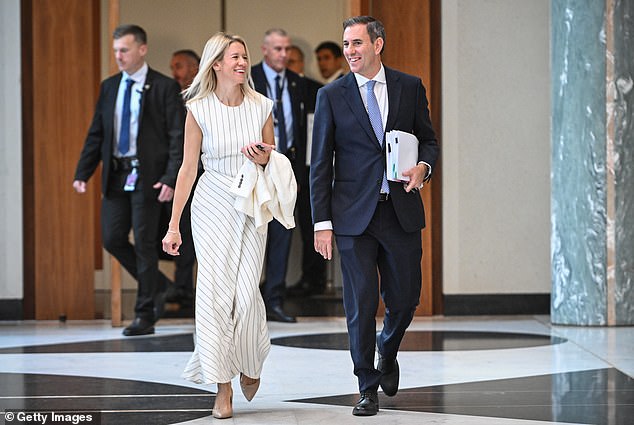Mortgage holders are hoping Australia’s central bank will copy the US Federal Reserve’s cash rate cut, but the treasurer says the economic environment is different.
For the first time in four years, the Federal Reserve has announced a relatively large 50 basis point rate cut, leaving Australian mortgage holders wondering whether the Reserve Bank of Australia will follow suit.
But Treasurer Jim Chalmers said the US central bank faced a different economic outlook compared to the Australian central bank.
“What we saw in the US overnight was pretty much what we expected,” he told Nine’s Today show on Thursday.
“When the Reserve Bank meets next week they will be looking at a whole range of issues, including that, but they will focus primarily on inflation, as will the Government.”
The benchmark federal funds rate had risen more than Australia’s cash rate, and remains higher even with the recently announced cut.
The Fed’s target range for the rate now stands at 4.75 to 5.0 percent after the half-percentage point cut, compared with Australia’s cash rate of 4.35 percent.
Treasurer Jim Chalmers (pictured) said a US overnight rate cut was expected and said that did not mean Australia should also cut the cash rate.
The Reserve Bank’s last rate cut was in 2020, when the cash rate fell to 0.10 per cent.
The US announcement was just one of many factors, including inflation, that the Reserve Bank must consider in its monetary policy decisions.
“The global economy is a pretty uncertain place, which is one of the reasons we’re seeing these rate cuts in places like the US,” Dr Chalmers said.
‘As far as the Australian situation is concerned, inflation is coming down quite substantially.
“The Reserve Bank will take that factor into account.”
Deputy Opposition Senate Leader Michaelia Cash said there was “no good news in sight for Australians” as the domestic inflation outlook was significantly more pessimistic compared to the US.
“This confirms once again that Australia is now at the back of the pack when it comes to combating inflation,” he said.
The Reserve Bank is likely to keep an eye on Australian Bureau of Statistics labour force data for August, due out on Thursday.
The labor market has been weakening gradually in line with a broader economic slowdown designed to reduce inflation, which is still high.
But despite the sluggish economy, demand for labor remains relatively resilient, a bright spot the federal government has repeatedly highlighted.

Australian mortgage holders have been feeling the impact of consecutive interest rate rises, with the Reserve Bank’s last rate cut coming in 2020 (file image)
The government expects data to show more than a million jobs have been created since Labour took power.
“The labour market in Australia has been quite resilient – we’ve seen the unemployment rate rise a bit over the last year, so we’ve seen job vacancies decline a bit,” Dr Chalmers said.
“In the context of a slowing economy and a softer labour market, creating a million jobs under this Labour government is quite a remarkable feat.”
In July, the unemployment rate rose 0.1 percentage points for the second consecutive month, to 4.2 percent, and 58,000 jobs were added to the economy.
Commonwealth Bank economists expect the August reading to show around 20,000 jobs were added to the economy, pushing the unemployment rate up to 4.3 per cent.
CreditorWatch chief economist Anneke Thompson said the jobs data would be “very telling” about what the future holds for the Australian economy.

Dr Chalmers said Australia’s economy has been resilient despite inflation being above the target range and millions of Australians struggling with the cost of living (file image)
The credit reporting agency’s monthly business risk index has been flagging “extremely challenging conditions,” especially in food and beverage, retail and construction.
“Under these circumstances, unemployment is almost certain to continue to rise. The question is by how much?” Thompson said.
Strong public sector employment, especially in the disability sector, was masking weaker underlying job creation in the private sector, he added.
“We don’t expect businesses to feel more confident until there are at least two or three cuts in the cash rate,” he said.

